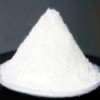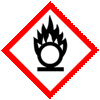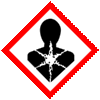Barium Nitrate Manufacturers, with SDS GHS MSDS Sheet |
Supplier, Manufacturer, Exporter of Barium Nitrate, Muby Chemicals of Mubychem Group, established in 1976, is the original manufacturers of Specialty Chemicals, Pharmaceutical Excipient, Fragrance Food & Flavor chemicals, Reagent Grade Chemicals, Shale Gas Fracturing Chemicals in India. Mubychem Group has several manufacturing facilities spread across Western India and world wide contacts and toll manufacturers. We are exporting globally to countries like USA, Canada, Europe, UAE, South Africa, Tanzania, Kenya, Egypt, Nigeria, Cameroon, Uganda, Turkey, Mexico, Brazil, Chile, Argentina, Dubai, Korea, Vietnam, Thailand, Malaysia, Indonesia, Australia, China, Germany, France, Italy Portugal, Bangladesh, etc. The products are offered as per required specifications and in correct shape and size in mm or meshs or microns as specified by the buyer. The participating units have one or more accreditations like FDA - cGMP and GLP approval, ISO-9001 Certified, "REACH" Registered, ISO-14001, ISO/IEC 17025, ISO-22000, FSSC 22000, ISO 45001, Kosher Certified, Halal Certified, HACCP, FSSAI. We offer Commercial Pure & IP BP EP Ph Eur USP NF JP FCC Food Grade Analytical Reagent Grades of Chemicals |
| Bookmark this Web Site -- or -- Email This Page Info to a Colleague or Yourself |
Search our website here:







Barium Nitrate: CAS Number: 10022-31-8, EINECS EC Number: 233-020-5, Molecular Formula: Ba(NO3)2, Molecular Weight: 261.34, HS Code 2834 29 20
How big is your requirement or how small
We serve it all.
Specifications, Safety Data Sheet, Manufacturing process details, Wholesale retail buy sell prices, Uses etc available on line in these pages for Barium Nitrate.
For SDS MSDS Sheet Click
SDS MSDS Sheet of Barium Nitrate Manufacturers
Barium Nitrate
Pure Suppliers

Barium nitrate is the inorganic compound with the chemical formula Ba(NO3)2. It, like most barium salts, is colorless, toxic, and water-soluble. It burns with a green flame and is an oxidizer; the compound is commonly used in pyrotechnics.
General Properties and Specifications of Barium Nitrate:
Appearance: White, lustrous crystals.
Assay: 99% minimum.
Odor: Odorless.
Relative density: about 3.24
Melting point: 592C literature.
Solubility: Soluble in water. Insoluble in alcohol.
Barium Nitrate Analytical Reagent Grade:
Ba(NO3)2
Formula Wt 261.35
CAS Number 10022-31-8
REQUIREMENTS
Assay: 99.0% Ba(NO3)2
pH of a 5% solution: 5-8 at 25C
MAXIMUM ALLOWABLE
Insoluble matter: 0.01%
Chloride (Cl): 5 ppm
Calcium (Ca): 0.05%
Potassium (K): 0.005%
Sodium (Na): 0.005%
Strontium (Sr): 0.1%
Heavy metals (as Pb): 5 ppm
Iron (Fe): 2 ppm.
We also manufacture and supply as under:
Manufacturers:
div



Exporters to USA Canada UAE Europe South Africa Tanzania Kenya Uganda Egypt Nigeria Turkey Mexico Brazil Argentina Chile Dubai etc.
Global or International Suppliers, Exporters, Importers, Manufacturers
I shall pass through this world, but once. If therefore, there is any good that I can do, or if there is any favor that I can show to a fellow human being, let me do it now. Let me not defer or neglect it. For I shall not tread this way again
Barium Nitrate SDS, Safety Data Sheet
MSDS Sheet, Material Safety Data Sheet 29-Apr-21
1. Product Identification
Product Name & Other Names: Barium Nitrate.
CAS No.: 10022-31-8
EINECS: EC Number: 233-020-5
Molecular Weight: 261.34
Chemical Formula: Ba(NO3)2
Relevant uses and uses advised against (if any): Industrial use only.
Supplier: As per letterhead.
2. Hazards Identification
GHS, Globally Harmonized System Classification in accordance with 29 CFR 1910
Classification according to Regulation (EC) No 1272/2008
Oxidizing solids (Category 3) H272
Acute toxicity - Oral (Category 3) H301
Serious eye damage/eye irritation (Category 2A) H319
Acute toxicity, Inhalation (Category 4) H332
Labeling according to GHS USA & Regulation (EC) No 1272/2008
GHS Label Elements  Oxidizing Solid | GHS Label Elements  Health Hazard |
Signal Word: Warning
Hazard Statements:
H272: May intensify fire; oxidizer.
H301: Toxic if swallowed.
H319: Causes serious eye irritation.
H332: Harmful if inhaled.
Precautionary Statements
P210: Keep away from heat/sparks/open flames/hot surfaces. - No smoking.
P220: Keep/Store away from clothing/other combustible materials.
P221: Take any precaution to avoid mixing with combustibles.
P260: Do not breathe dust/fume/gas/mist/vapors/spray.
P264: Wash thoroughly after handling.
P273: Avoid release to the environment.
P270: Do not eat, drink or smoke when using this product.
P280: Wear protective gloves/protective clothing/eye protection/face protection.
P330: Rinse mouth.
P362: Take off contaminated clothing and wash before reuse.
P301+P312: IF SWALLOWED: Call a POISON CENTER or doctor/physician if you feel unwell.
P302+P352: IF ON SKIN: Wash with soap and water.
P305+P351+P338: IF IN EYES: Rinse cautiously with water for several minutes. Remove contact lenses, if present and easy to do. Continue rinsing.
P332+P313: If skin irritation occurs: Get medical advice/attention.
P337+P313: If eye irritation persists: Get medical advice/ attention.
P501: Dispose of contents/container to authorized agents.
Classification according to EU Directives 67/548/EEC or 1999/45/EC:
Hazard Symbols:
O Oxidizer
T Toxic
Risk Phrases:
R8 Contact with combustible material may cause fire.
R20 Harmful by inhalation.
R25 Toxic if swallowed.
R36 Irritating to eyes.
3. Composition/Information on Ingredients
Product Name & Other Names: Barium Nitrate.
CAS No.: 10022-31-8
EINECS: EC Number: 233-020-5
4. First Aid Measures
Always seek medical attention after first aid measures are provided.
Inhalation: Remove to fresh air. If not breathing, give artificial respiration. If breathing is difficult, give oxygen. Get medical attention.
Ingestion: Never give anything by mouth to an unconscious person. Get medical attention.
Skin Contact: Wipe off excess material from skin then immediately flush skin with plenty of water for at least 15 minutes. Remove contaminated clothing and shoes. Get medical attention. Wash clothing before reuse. Thoroughly clean shoes before reuse.
Eye Contact: Immediately flush eyes with plenty of water for at least 15 minutes, lifting lower and upper eyelids occasionally. Get medical attention immediately.
Note to Physician: Symptomatic and supportive treatment is recommended.
5. Fire Fighting Measures
Flammability of the Product: Non-flammable. However, the product supports combustion.
Products of Combustion: When heated to decomposition, emits acid fumes.
Fire: Not considered to be a fire hazard though it supports combustion as an oxidizer.
Explosion: Containers may explode in the heat of a fire.
Fire Extinguishing Media: Preferably use water sprat. Use any means suitable for extinguishing surrounding fire.
Special Information: In the event of a fire, wear full protective clothing and NIOSH-approved self-contained breathing apparatus with full face piece operated in the pressure demand or other positive pressure mode. At high temperatures under fire conditions, it may produce toxic or irritating fumes. Fire-extinguishing work is done from the windward and the suitable fire-extinguishing method according to the surrounding situation is used. Uninvolved persons should evacuate to a safe place. It is a Strong Oxidizer. May decompose explosively when heated or involved in a fire. May accelerate burning if involved in a fire.
6. Accidental Release Measures
Personal precautions, protective equipment, and emergency procedures: Ventilate area of leak or spill. Avoid breathing dust/fumes/gas/mist/vapors/spray. Use individual protective equipment (waterproof boots, suitable protective clothing, safety glasses, etc.). Restrict unprotected personnel from the area. Prevent any contact with hot surfaces. Do not approach facing the wind. Do not touch the spilled material.
Environmental precautions: Do not let the product enter drains, soil, or water sources.
Methods and materials used for containment Cleanup procedures and Storage:
Small Spill: Avoid dust formation. Avoid breathing dust. Ensure adequate ventilation. Use appropriate tools to put the spilled solid in a convenient waste disposal container. Finish cleaning by spreading water on the contaminated surface and dispose of according to local and regional authority requirements.
Large Spill: Contain spilled material. Cover with an inert, non-combustible absorbent material, (e.g., sand, earth, diatomaceous earth, vermiculite). Vacuum or sweep-up and remove to an approved disposal container. Finish cleaning by spreading water on the contaminated surface and allow to evacuate as per law.
7. Handling and Storage
Precautions for safe handling: Apply according to good manufacturing and industrial hygiene practices. Ensure proper ventilation. In case of insufficient ventilation, wear suitable respiratory equipment. Wash thoroughly after handling. Do not drink, eat, or smoke while handling. Avoid contact with skin, eyes, and clothing. Minimize dust generation. Avoid breathing dust/fumes/gas/mist/vapors/spray. Avoid contact with eyes, skin, and clothing. Keep container tightly closed. Avoid ingestion and inhalation. Use individual protective equipment (waterproof boots, suitable protective clothing, safety glasses, etc.). Prevent any contact with hot surfaces.
Conditions for safe storage, including any incompatibilities: Store in cool, dry, and ventilated area away from heat sources and protected from sunlight in tightly closed original container. Keep air contact to a minimum. Store protected from heat, sparks and ignition sources and incompatible materials. Avoid contact with skin and eyes. Avoid inhalation of dust/mist/vapor. Do not store with incompatible materials like reducing agents, organic materials, water, acid anhydrides, acids, bases.
8. Exposure Controls/Personal Protection
Airborne Exposure Limits:
USA. Occupational Exposure Limits (OSHA): 0.5 mg/m3 TWA.
USA. ACGIH Threshold Limit Values (TLV): 0.5 mg/m3 TWA.
Ventilation System: A system of local and/or general exhaust is recommended to keep employee exposures as low as possible. Local exhaust ventilation is generally preferred because it can control the emissions of the contaminant at its source, preventing dispersion of it into the general work area.
Personal Respirators (NIOSH Approved): For conditions of use where exposure to dust or mist is apparent and engineering controls are not feasible a particulate respirator may be worn. For emergencies or instances where the exposure levels are not known, use a full-face positive-pressure, air-supplied respirator.
Skin Protection: Wear protective gloves and clean body-covering clothing.
Eye Protection: Use chemical safety goggles and/or full-face shield where dusting or splashing of solutions is possible. Maintain eye wash fountain and quick-drench facilities in work area.
Other Control Measures: Maintain good housekeeping in work area. Dust deposits on floors and other surfaces may pick up moisture and cause the surfaces to become slippery and present safety hazards. Handle in accordance with good industrial hygiene and safety practice. Wash hands after handling.
9. Physical and Chemical Properties
Appearance: White, lustrous crystals.
Odor: It is odorless.
Odor threshold: Not available.
pH: Not available.
Relative density: about 3.24
Melting Point: 592C literature.
Initial boiling point and boiling range: Not available.
Flash point: Not available.
Auto-ignition temperature: Not available.
Decomposition temperature: Not available.
Upper/lower flammability or explosive limits: Not available.
Vapor pressure: Not available.
Vapor density: Not available.
Evaporation rate: Not available.
Flammability (solid, gas): Not available.
Partition coefficient: n-octanol/water: Not available.
Solubility: Soluble in water. Insoluble in alcohol.
Viscosity: Not available.
Molecular Weight: 261.34
Chemical Formula: Ba(NO3)2
10. Stability and Reactivity
Stability: Stable under ordinary conditions of use and storage.
Hazardous Decomposition Products: It emits toxic acid fumes when heated to decomposition. Nitrogen oxides (NOx), Barium oxide are formed.
Hazardous Polymerization: Will not occur.
Incompatibilities: Reactive with reducing agents, organic materials. Avoid acid anhydrides, acids, bases, reducing agents. The product may undergo hazardous decomposition, condensation, or polymerization, it may react violently with water to emit toxic gases or it may become self-reactive under conditions of shock or increase in temperature or pressure.
Conditions to Avoid: Incompatibles. Avoid contact with combustible material (paper, wool, oil).
11. Toxicological Information
Toxicity to Animals: LD50 (Oral-Rat) 390 mg/kg
Special Remarks on Toxicity to Animals: Not available.
Carcinogenic Effects: Not a reported carcinogen.
Mutagenic Effects: Not available.
Teratogenic Effects: Not available.
Developmental Toxicity: Not available.
12. Ecological Information
BOD5 and COD: Not available.
Environmental Toxicity: The product may be harmful to plants, animals, and fish.
Persistence and Degradability: Unlikely to persist due to water solubility.
Mobility: Likely to be mobile due to water solubility.
Bioaccumulation/ Accumulation: No information available.
Results of PBT and vPvB assessment: No data available for assessment.
13. Disposal Considerations
Whatever cannot be saved for recovery or recycling should be managed in an appropriate and approved waste disposal facility. Processing use or contamination of this product may change the waste management options. State and local disposal regulations may differ from federal disposal regulations. Dispose of container and unused contents in accordance with federal, state, and local requirements.
14. Transport Information
DOT USA, TDG Canada & ADR/RID Europe:
Proper Shipping Name: Barium Nitrate
U.N. No.: 1446
Hazard Class and Packing Group Number: 5.1 (6.1), PG II
IMDG/IMO & IATA/ICAO:
Proper Shipping Name: Barium Nitrate
U.N. No.: 1446
Hazard Class and Packing Group Number: 5.1 (6.1), PG II
15. Regulatory Information
USA:
Hazard Category: Immediate (Acute), Fire Hazard
US SARA Hazard categories (section 311/312, 40 CFR 370-21): Fire and Acute health hazard. See section 2.
Section 16 - Additional Information
European Labeling in Accordance with EC Directives:
H272: May intensify fire; oxidizer.
H301: Toxic if swallowed.
H319: Causes serious eye irritation.
H332 Harmful if inhaled.
Classification according to EU Directives 67/548/EEC or 1999/45/EC:
Hazard Symbols:
O Oxidizer
T Toxic
Risk Phrases:
R8 Contact with combustible material may cause fire.
R20 Harmful by inhalation.
R25 Toxic if swallowed.
R36 Irritating to eyes.
Disclaimer:
**************************
Our company provides this MSDS sheet in good faith but makes no representation as to its comprehensiveness or accuracy. This SDS sheet is intended only as a guide to the appropriate precautionary handling of the material by a properly trained person using this product. The above information has been compiled from various sources and has the possibility of discrepancy and being out-dated information. Individuals receiving the information must exercise their independent judgment and do further search in determining its appropriateness for a particular purpose. In no case shall our company be liable to loss or damages by the product user.
**************************
















